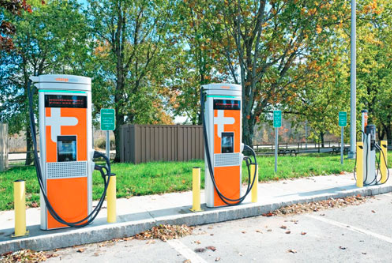charging piles: fueling the transition to electric transportation

with the rapid adoption of electric vehicles (evs) worldwide, the importance of reliable and accessible charging infrastructure cannot be overstated. at the heart of this infrastructure lie charging piles, the devices that enable electric cars, buses, and other vehicles to recharge their batteries. these units are pivotal in accelerating the shift away from fossil fuels and towards cleaner mobility.
this article explores the definition, types, benefits, and future of charging piles, highlighting why they are a fundamental component of the ev ecosystem.
what are charging piles?
charging piles are physical units installed in various locations that provide electrical energy to recharge electric vehicles. they function similarly to fuel pumps at traditional gas stations but instead deliver electricity through standardized connectors. the growing presence of charging piles in cities, highways, parking lots, and residential areas is essential to support the expanding ev market.
sometimes called charging stations or ev chargers, the term “charging pile” specifically refers to the hardware device—typically a cabinet or post with power outlets—where users connect their vehicles.
main categories of charging piles
charging piles come in several varieties, primarily distinguished by the type of current supplied, power output, and charging speed:
alternating current (ac) charging piles
ac charging piles usually range from 3.3 kw to 22 kw. they are best suited for locations where vehicles are parked for extended periods, such as offices, homes, or shopping centers, as they offer slower charging compared to dc units.
direct current (dc) charging piles
dc charging piles bypass the onboard charger and supply dc power directly to the vehicle battery. this enables much faster charging speeds, from 50 kw to over 350 kw in some cases. these piles are often found at highway rest stops or public fast-charging hubs, where quick turnaround is crucial.
ultra-fast charging piles
a specialized form of dc piles, ultra-fast charging pilesprovide extremely high power levels, cutting charging times drastically. these are instrumental for long-distance travel, reducing charging stops and making evs more practical for a wider audience.
why charging piles matter for ev adoption
the success of electric vehicles depends largely on how easy and convenient it is to recharge them. charging piles play a vital role by:
- reducing range anxiety: accessible charging piles help ease fears about running out of battery during trips.
- improving convenience: public and private charging piles enable owners to recharge at workplaces, malls, or on the road.
- supporting sustainability: by facilitating ev use, charging piles contribute to lowering emissions and combating climate change.
- boosting economy: the charging pile industry drives new jobs in manufacturing, installation, maintenance, and energy management.
key features of modern charging piles
advances in technology have equipped charging piles with sophisticated capabilities, including:
- smart connectivity: many charging piles integrate with networks and apps, allowing remote monitoring, scheduling, and payment.
- dynamic load management: to optimize electricity use, piles adjust charging speeds based on grid demand and availability.
- multiple connectors: supporting various standards (such as type 2, ccs, and chademo) ensures compatibility with different ev models.
- robust design: outdoor charging piles are built to withstand weather conditions and vandalism.
challenges in rolling out charging piles
despite their importance, deploying charging piles involves obstacles:
- high upfront costs: installing fast dc piles requires significant infrastructure investment, including electrical upgrades.
- grid limitations: some areas lack sufficient capacity to support multiple high-power chargers simultaneously.
- standardization hurdles: differing connector types and charging protocols can complicate universal access.
- maintenance needs: ensuring piles remain operational, especially outdoors, demands ongoing care and support.
innovations shaping the future of charging piles
as ev adoption grows, charging piles are evolving rapidly:
- vehicle-to-grid (v2g) technology: allowing evs to return power to the grid through charging piles, helping balance supply and demand.
- renewable energy integration: coupling charging piles with solar or wind power reduces carbon footprints further.
- wireless charging: inductive charging piles promise cable-free, user-friendly experiences in the near future.
- modular and scalable designs: enabling easier upgrades and expansions as demand increases.
strategic placement of charging piles
for maximum impact, charging piles need to be strategically located. urban planners and businesses consider:
- high-traffic areas: malls, transport hubs, and workplaces.
- residential complexes: supporting home charging where personal garages may not be available.
- public parking: accessible and safe locations encourage use by more ev drivers.
how businesses benefit from installing charging piles
installing charging piles is increasingly seen as a value-add for businesses:
- attracting customers: retail locations with charging facilities draw in ev owners.
- enhancing brand image: demonstrating commitment to sustainability resonates with eco-conscious consumers.
- employee satisfaction: workplaces offering charging encourage ev adoption among staff.
- potential revenue: charging fees or partnerships can generate additional income streams.
conclusion
charging piles are essential infrastructure in the transition toward sustainable transportation. by providing reliable, accessible, and fast charging options, they help overcome key barriers to ev adoption. their ongoing innovation and strategic deployment will ensure electric vehicles become practical and convenient for all users.
as cities and businesses continue to invest in charging pile networks, they pave the way for cleaner air, reduced carbon emissions, and a more sustainable future.







